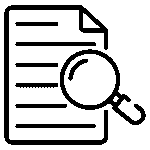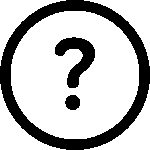Oral Antidiabetic Agents
Common Oral antidiabetic medicines (hypoglycemic agents) :
MCQs on this topic are in the end.
1. Sulfonylureas:
- Stimulate beta cells to produce insulin;
- Second-generation sulfonylureas: glipiZIDE , glyBURIDE, glimepiride
Glipizide is taken as a 2.5 mg to 10 mg tablet, single dose or in two divided doses, 30 minutes before breakfast.
Glimepiride is available as a 1, 2, and 4 mg tablet, taken once a day with breakfast or twice a day with meals. For patients at increased risk for hypoglycemia, such as older patients or those with a chronic kidney disease, the initial dose could be as low as 0.5 mg daily.
Glyburide is available as a 1.25, 2.5, and 5mg tablet, taken as a single dose or two divided doses.
2. Biguanides:
- Reduce the rate of endogenous glucose production by liver.
- Increase the use of glucose by muscle and fat cells.
- Metformin
Metformin is the first drug of choice in patients with type 2 diabetes mellitus. It is given orally in 500 to 1000 mg tablets twice a day.
3. Thiazolidinediones:
- Improve insulin sensitivity, thus improving peripheral glucose uptake
- Rosiglitazone, pioglitazone
Pioglitazone is given as 15, 30, or 45 mg tablet daily. Rosiglitazone, when rarely used, is given as 2, 4 and 8 mg daily.
4. Meglitinides:
- Stimulate quick release of insulin by beta cells
- Repaglinide, Nateglinide
Repaglinide is available as a 0.5, 1, or 2 mg tablet, taken orally as two to three divided doses in a day
5. Alpha-glucosidase inhibitors:
- Block digestion of ingested carbohydrates and slow absorption of glucose
- Acarbose, Miglitol
6. Dipeptidyl peptidase 4 (DPP-4) inhibitor:
- Prevents breakdown of glucagon-like peptide-1 (GLP-1) which reduces blood glucose levels in the body
- Sitagliptin, saxagliptin
7. Synthetic analog of human amylin:
- Decreases gastric emptying
- Pramlintide
8. Incretin mimetic:
- Stimulates insulin production in type 2 diabetes
- Exenatide, liraglutide
- Injectable medications for type 2 diabetes
9. Combination:
- GlyBURIDE/metformin
- Sitagliptin/metformin
- Pioglitazone/metformin
Common Questions on Oral Hypoglycemic Agents
Question 1 : A diabetic patient has the following presentation: unresponsive to voice or touch, tachycardia, diaphoresis, and pallor. Which of the following actions by the healthcare provider is the priority?
Send blood to the laboratory for analysis
Administer the prescribed insulin
Administer oxygen per nasal cannula
Administer 50% dextrose IV per protocol
Question 2 : The healthcare provider is teaching a group of students about the characteristics of type 1 diabetes mellitus. Which of the following describe the underlying cause of the disease?
Increased hepatic glycogenesis
Cellular resistance to insulin
Destruction of pancreatic beta cells
Atrophy of pancreatic alpha cells
Question 3 : A diabetic patient has been prescribed an alpha-1 glucosidase inhibitor. When teaching the patient about the medication, which of the following information will the healthcare provider include?
“Call us immediately if you experience tremors or palpitations.”
“Take one tablet daily first thing in the morning.”
“Take this medication with the first bite of each meal.”
“You should select foods low in protein when taking this medication.”
Question 4 : What Hyperglycemic medication increases blood glucose with in 5 – 20 minutes?
Glucagon
Glucovance
Glybride
Glimepride
Glipizide
Question 5 : What stimulates rapid and short lived release of insulin from the pancreas
Meglitinides
Thiazolidinediones
Biguanides
Alpha- Glucosidase
Sulfonylureas
Question 6 : What classification of OAD (Oral Anti-diabetic) medication delays the absorbtion of carbohydrates from the GI TRACT?
Biguanides
Thiazolidinediones
Alpha- Glucosidase
Meglitinides
Sulfonylureas
Question 7 : What Oral Antidiabetic stimulates beta cells to secrete more insulin and increase receptor sites in the tissue?
Biguanides
Thiazolidinediones
Alpha- Glucosidase
Meglitinides
Sulfonylureas
Question 8 : What increased glucose uptake in muscle, decreases glucose production in the liver?
Meglitinides
Thiazolidinediones
Sulfonylureas
Glucagon
Answers
Question 1 : Correct Answer : 4. Administer 50% dextrose IV per protocol.
- The body responds to hypoglycemia by mounting a sympathetic response, causing tachycardia, diaphoresis, and pallor. The patient may become unresponsive as the glucose supply to the brain decreases.
Question 2 : Correct Answer : 3. Destruction of pancreatic beta cells
- The major feature of type 1 diabetes mellitus is an absence of endogenous insulin.
- Insulin is produced by beta cells in the pancreas.
- The beta cells in a patient with type 1 diabetes mellitus are destroyed, so the patient has no endogenous insulin.
Question 3 : Correct Answer : 3. “Take this medication with the first bite of each meal.”
- Glucosidase is a hormone that breaks down glucose so it can be absorbed.
- Glucosidase inhibitors act in the gut and have a rapid onset.
- The patient should be instructed to take the medication with the first bite of food at each main meal. Glucosidase inhibitors do not cause hypoglycemia on their own.
Question 4: Correct Answer : 1. Glucagon
Question 5 : Correct Answer : 1. Meglitinides
Question 6 : Correct Answer : 3. Alpha- Glucosidase
Question 7 : Correct Answer : 5. Sulfonylureas
Question 8 : Correct Answer : 2. Thiazolidinediones
More Useful Topics:
- Muscles of the body
- Numbers to learn for any medical exam
- Reasoning Questions for Nursing Exams
- 100 Important Points for DSSSB Nursing Exam
- Types of Fractures



